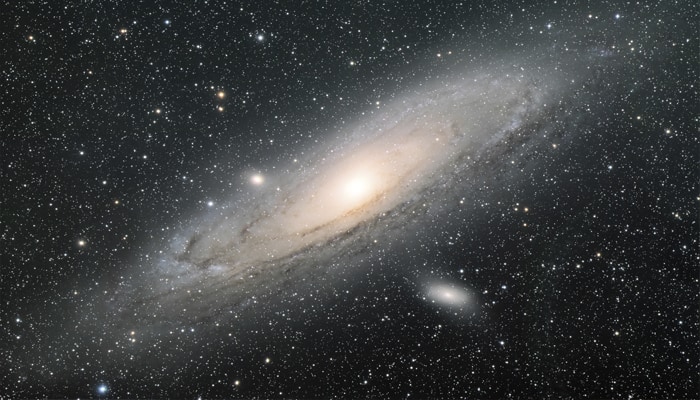New Delhi: Researchers have discovered a very distance galaxy which is about a thousand times brighter than the Milky Way.
It is the brightest of the submillimetre galaxies, a class of ultraluminous infrared galaxies, according to the researchers.
To measure this galaxy, whose discovery was published in the Astrophysical Journal Letters, the researchers used the Gran Telescopio Canarias (GTC) at the Roque de los Muchachos Observatory (Garafía, La Palma) in Spain.
In order to identify the brightest submillimetre galaxies, researchers carried out a search of the whole sky, combining the data bases of NASA`s WISE satellite and European Space Agency`s Planck satellite.
The galaxy`s light, amplified by a much nearer galaxy cluster acting as a lens, forms an image which appears much bigger than it should, and thanks to this effect the researchers could characterise its nature and properties spectroscopically using the Gran Telescopio Canarias.
This phenomenon, known as gravitational lensing, is comparable to that produced by lenses on light rays, and acts as a sort of magnifier, changing the size and intensity of the apparent image of the original object.
"Thanks to the gravitational lens produced by a cluster of galaxies between ourselves and the source, which acts as if it was a telescope, the galaxy appears 11 times bigger and brighter than it really is," said study first author Anastasio Diaz Sanchez, researcher at Technical University of Cartagena, Spain.
The galaxy is notable for having a high rate of star formation. It is forming stars at a rate of 1,000 solar masses per year, compared to the Milky Way which is forming stars at a rate of some twice a solar mass per year.
"This type of objects harbour the most powerful star forming regions known in the universe. The next step will be to study their molecular content," said study co-author Susana Iglesias-Groth from Instituto de Astrofisica de Canarias in Spain.
(With Agency inputs)
















